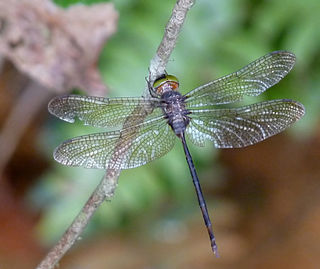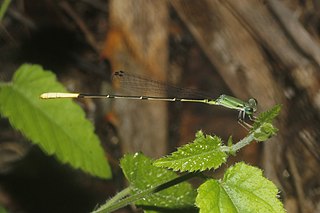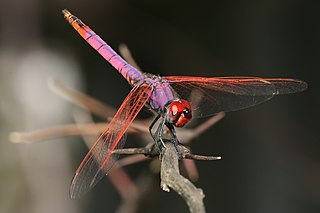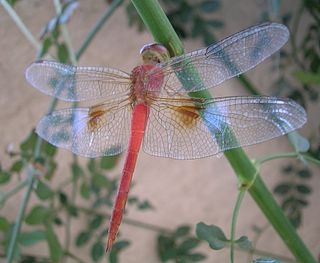| Epophthalmia | |
|---|---|
 | |
| Epophthalmia elegans | |
| Scientific classification | |
| Kingdom: | |
| Phylum: | |
| Class: | |
| Order: | |
| Family: | |
| Genus: | Epophthalmia Burmeister, 1839 |
Epophthalmia a genus of dragonflies in the family Macromiidae.
| Epophthalmia | |
|---|---|
 | |
| Epophthalmia elegans | |
| Scientific classification | |
| Kingdom: | |
| Phylum: | |
| Class: | |
| Order: | |
| Family: | |
| Genus: | Epophthalmia Burmeister, 1839 |
Epophthalmia a genus of dragonflies in the family Macromiidae.
The genus contains the following species: [1]
| Male | Female | Scientific name | Common Name | Distribution |
|---|---|---|---|---|
| Epophthalmia australis Hagen, 1867 | Celebes, Borneo, Australia | |||
| Epophthalmia bannaensis L.S. Zha & Y.H. Jiang 2010 | China (Yunnan) | |||
 | Epophthalmia elegans (Brauer, 1865) | regal pond cruiser [2] | Japan, Australia | |
 | Epophthalmia frontalis Selys, 1871 | India, Nepal, Thailand, Malaysia | ||
| Epophthalmia kuani Jiang, 1998 | China (Jiangsu) | |||
 | ![Common Torrent Hawk(Epophthalmia vittata) female., naattttu nii[?]kkaavl[?]. (39708259400).jpg](http://upload.wikimedia.org/wikipedia/commons/thumb/1/11/Common_Torrent_Hawk%28Epophthalmia_vittata%29_female.%2C_%E0%B4%A8%E0%B4%BE%E0%B4%9F%E0%B5%8D%E0%B4%9F%E0%B5%81_%E0%B4%A8%E0%B5%80%E0%B5%BC%E0%B4%95%E0%B5%8D%E0%B4%95%E0%B4%BE%E0%B4%B5%E0%B4%B2%E0%B5%BB._%2839708259400%29.jpg/120px-Common_Torrent_Hawk%28Epophthalmia_vittata%29_female.%2C_%E0%B4%A8%E0%B4%BE%E0%B4%9F%E0%B5%8D%E0%B4%9F%E0%B5%81_%E0%B4%A8%E0%B5%80%E0%B5%BC%E0%B4%95%E0%B5%8D%E0%B4%95%E0%B4%BE%E0%B4%B5%E0%B4%B2%E0%B5%BB._%2839708259400%29.jpg) | Epophthalmia vittata Burmeister, 1839 | common torrent hawk | India, Sri Lanka, and Indonesia. |
| Epophthalmia vittigera (Rambur, 1842) | Borneo | |||

Zyxomma is a genus of dragonfly in the family Libellulidae. Species of Zyxomma are small to medium-sized, dully coloured, crepuscular insects. They are known as Duskdarters. Members of Zyxomma are found in India, Japan, Africa and Australia.

Erpetogomphus is a genus of dragonfly in the family Gomphidae. They are commonly known as ringtails. Most of the species are predominantly green coloured and the males have a moderately clubbed tail. A fossil species are known from the Miocene Mexican amber

Hylaeothemis is a genus of dragonflies in the family Libellulidae.

Leptobasis is a small genus of damselflies in the family Coenagrionidae. They are commonly known as swampdamsels. The genus is neotropical and one species, L. melinogaster, has been recorded in Texas. They are slender and the females have very long ovipositors.

Macromia is a genus of large dragonflies in the family Macromiidae. Species of the genus Macromia are commonly known as river cruisers from their habit of cruising long distances along river banks. Most species occur in the tropical Australasian region, with one species being found in Europe , and a few species occurring in North America.

Mortonagrion is a genus of damselfly in the family Coenagrionidae. It contains the following species:

Rhyothemis is a genus of dragonfly in the family Libellulidae. They are commonly known as flutterers.

Trithemis is a genus of dragonflies in the family Libellulidae. They are commonly known as dropwings. There are over 40 species, mainly from Africa; two are endemic to Madagascar, and five can be found in Asia. They are found in a wide variety of habitats; some species being adapted to permanent streams in forests, and others being capable of breeding in temporary pools in deserts.

Tholymis is a genus of medium-sized dragonflies in the family Libellulidae. Species of Tholymis are tropical, active mostly at dawn and dusk.

Orthemis is a genus of large Neotropical dragonflies, commonly called Tropical King Skimmers. The males are generally red and the females brown.

Cannaphila is a small Neotropical genus of dragonflies in the family Libellulidae. They are commonly called narrow-winged skimmers. One species, C. insularis, occurs in North America. There are three species.

Paracercion is a small genus of damselflies in the family Coenagrionidae.They are commonly known as Lilysquatters.

Sieboldius is a genus of dragonflies in the family Gomphidae. The genus occurs in Asia and is closely related to the Dragonhunter Hagenius brevistylus of North America.

Sinictinogomphus clavatus, the golden flangetail, is a species of dragonfly in the clubtail family Gomphidae. It is the only species in the genus Sinictinogomphus.
Rhinoneura is a genus of damselflies in the family Chlorocyphidae. There are only two species in the genus, both believed to be occur only the highlands of north Borneo.

Nannophya is a genus of dragonfly in the family Libellulidae. They are found in Asia and Australia. They are commonly known as Pygmyflies. Species of Nannophya are small to tiny dragonflies often brightly coloured. It includes Nannophya pygmaea, the scarlet dwarf, which is considered to be the world's smallest dragonfly.

The common torrent hawk, is a species of dragonfly in the family Macromiidae. It is found in India, Sri Lanka, and Indonesia. Three subspecies recognized.

Mortonagrion varralli, the brown dartlet, is a species of damselfly in the family Coenagrionidae, endemic to India. The insect is named after Frederic Charles Fraser's wife, Ethel Grace Fraser (1881-1960), a constant companion of his collecting trips in India.

Idionyx minimus is a species of dragonfly in the family Corduliidae. It is known only from the Western Ghats of Kerala, India.

Epophthalmia frontalis is a species of dragonfly in the family Macromiidae. It is found in India, Nepal, Thailand, and other southeast Asian countries.